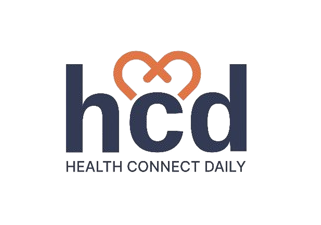
Atrial fibrillation and stroke risk is more than just an irregular heartbeat it’s a major risk factor for stroke. At Health Connect Daily, we understand how vital it is to educate readers on the connection between AFib and stroke, and how to reduce the risk through lifestyle choices, medication, and monitoring.
In this comprehensive guide, you’ll find everything you need to know about atrial fibrillation and stroke risk. We’ll use research-backed data, expert opinions, and practical tips to keep your heart health on track.
What is Atrial Fibrillation (AFib)?
A Disruption in Heart Rhythm
AFib is a common cardiac arrhythmia where the upper chambers of the heart (the atria) beat irregularly and often rapidly. This prevents blood from flowing efficiently to the lower chambers and the rest of the body.
Prevalence
According to the CDC, an estimated 12.1 million people in the U.S. will have AFib by 2030.
How Does AFib Increase Stroke Risk?
Blood Pooling and Clot Formation
When the heart doesn’t pump effectively, blood can pool in the atria, leading to the formation of blood clots. These clots can travel to the brain, causing an ischemic stroke.
Key Statistics
- People with AFib are 5 times more likely to have a stroke.
- 15-20% of all strokes are attributed to AFib.
Symptoms of Atrial Fibrillation
What to Watch For
- Irregular or rapid heartbeat
- Shortness of breath
- Fatigue
- Dizziness
- Chest discomfort
Types of AFib
Paroxysmal, Persistent, and Permanent
- Paroxysmal AFib: Comes and goes, usually stops on its own.
- Persistent AFib: Lasts more than 7 days and requires treatment.
- Permanent AFib: Ongoing and cannot be corrected with treatment.
Who is at Risk for AFib?
Common Risk Factors
| Risk Factor | Description |
| Age | Risk increases over age 65 |
| High Blood Pressure | Major contributor to AFib and stroke |
| Heart Disease | Including heart failure and prior attacks |
| Diabetes | Affects heart structure and function |
| Obesity | Linked to inflammation and heart strain |
| Alcohol Consumption | Binge drinking can trigger episodes |
Diagnosing Atrial Fibrillation
How is AFib Diagnosed?
Diagnosing atrial fibrillation involves a variety of methods aimed at capturing irregular heart rhythms and determining underlying causes. Early detection is key to minimizing complications such as stroke.
1. Electrocardiogram (ECG or EKG)
An electrocardiogram is the most common and immediate test used to diagnose AFib. It records the electrical signals of the heart through electrodes placed on the skin.
- Benefit: Quick and non-invasive.
- Detection: Identifies irregular heartbeat, atrial flutter, and other abnormalities.
2. Holter Monitor
A Holter monitor is a portable ECG device worn for 24 to 48 hours.
- Purpose: Captures intermittent AFib episodes that may not appear during a standard ECG.
- Usage: Ideal for patients with suspected paroxysmal AFib.
3. Event Monitor
An event monitor is similar to a Holter monitor but used for longer durations (up to 30 days). Patients activate it when symptoms occur.
- Advantage: Excellent for diagnosing occasional or silent AFib episodes.
4. Echocardiogram
An echocardiogram uses ultrasound waves to create images of the heart.
- Function: Evaluates heart structure and function, especially in the atria.
- Insight: Detects blood clots, valve issues, and wall motion abnormalities.
5. Blood Tests
While not directly diagnosing AFib, blood tests can uncover contributing conditions:
- Thyroid function tests: Hyperthyroidism can trigger AFib.
- Electrolyte levels: Imbalances in potassium, magnesium, or calcium may provoke arrhythmias.
- Kidney and liver function: Important for choosing safe medications.
6. Stress Test or Exercise ECG
Used when AFib symptoms occur during physical exertion.
- Purpose: Monitors heart activity under controlled stress.
- Benefit: Reveals exercise-induced arrhythmias or coronary artery disease.
7. Cardiac MRI or CT Scan
Advanced imaging to visualize heart anatomy and blood flow.
- Benefit: Helpful in complex cases or pre-ablation assessment.
Timely diagnosis using one or more of these methods can lead to early intervention and significantly reduce the risk of stroke from AFib. If you notice any irregularities in your heartbeat or symptoms mentioned earlier, consult a healthcare provider immediately.
Stroke Risk Scoring in AFib Patients
CHA2DS2-VASc Score Explained
This score estimates stroke risk in AFib patients.
| Risk Factor | Points |
| Congestive Heart Failure | 1 |
| Hypertension | 1 |
| Age ≥75 | 2 |
| Diabetes Mellitus | 1 |
| Stroke/TIA History | 2 |
| Vascular Disease | 1 |
| Age 65-74 | 1 |
| Female Sex | 1 |
Score 2 or more = high risk
Treatment Options to Prevent Stroke in Atrial Fibrillation Patients
Effectively managing atrial fibrillation (AFib) is essential to reducing the risk of stroke. At Health Connect Daily, we emphasize a multi-pronged approach including medication, procedures, and lifestyle changes.
1. Anticoagulant Medications
Anticoagulants, often called blood thinners, help prevent blood clots from forming in the heart, significantly reducing stroke risk in AFib patients.
Warfarin: A long-standing anticoagulant requiring regular blood tests (INR monitoring) to maintain safe and effective dosing. Warfarin interacts with many foods and medications, so careful management is necessary.
Direct Oral Anticoagulants (DOACs): Newer alternatives such as Apixaban and Rivaroxaban offer effective clot prevention without frequent monitoring. They have fewer dietary restrictions and are often preferred for eligible patients.
Choosing the right anticoagulant depends on individual risk factors, kidney function, and bleeding risk, so consultation with a healthcare provider is vital.
2. Cardioversion
Cardioversion is a medical procedure that restores the heart’s normal rhythm from atrial fibrillation. It can be performed using:
Electrical cardioversion: A controlled electric shock delivered to the heart.
Pharmacologic cardioversion: Medications that help reset the heart rhythm.
This method is often used for persistent AFib to reduce symptoms and prevent stroke, sometimes alongside anticoagulant therapy.
3. Catheter Ablation
For some patients, catheter ablation is an effective treatment option. This minimally invasive procedure:
- Uses radiofrequency or cryotherapy to destroy small areas of heart tissue responsible for the irregular rhythm.
- It can significantly reduce AFib episodes and improve quality of life.
- It is considered when medications or cardioversion do not provide adequate control.
Lifestyle Changes That Reduce Stroke Risk in AFib
Alongside medical treatments, lifestyle adjustments play a crucial role in minimizing stroke risk and improving heart health.
Key Recommendations
Healthy Diet: Adopt heart-friendly eating patterns such as the DASH diet (Dietary Approaches to Stop Hypertension) or the Mediterranean diet, which emphasize fruits, vegetables, whole grains, lean proteins, and healthy fats.
Regular Exercise: Aim for at least 150 minutes of moderate-intensity aerobic exercise per week. Exercise helps control weight, blood pressure, and improves heart function.
Weight Management: Maintaining a healthy weight lowers the risk of AFib and stroke by reducing strain on the heart.
Alcohol Moderation: Excessive alcohol intake can trigger AFib episodes; limit consumption according to medical advice.
Quit Smoking: Smoking contributes to cardiovascular disease and stroke; quitting improves overall heart health.
Monitoring and Follow-Up: Staying on Top of AFib
Ongoing monitoring is essential to managing atrial fibrillation and preventing stroke complications.
Wearable Devices: Modern smartwatches and fitness trackers with ECG capabilities help detect irregular heartbeats early, even between doctor visits.
Regular Medical Checkups: Frequent visits to your healthcare provider for heart monitoring and blood tests ensure treatments remain effective and side effects are minimized.
AFib and Sleep Apnea: An Overlooked Connection
Sleep apnea is highly prevalent in AFib patients and significantly worsens outcomes.
Untreated sleep apnea can trigger AFib episodes and increase stroke risk.
Managing sleep apnea through lifestyle changes or treatments like CPAP (continuous positive airway pressure) can reduce AFib recurrence and improve overall cardiovascular health.
Emergency Warning Signs: When to Seek Immediate Help
Recognizing stroke symptoms early is critical for prompt treatment and better outcomes.
If you experience any of the following, call emergency services immediately:
- Sudden numbness or weakness, especially on one side of the body
- Difficulty speaking, understanding speech, or confusion
- Sudden vision loss or trouble seeing
- Severe, unexplained headache
These signs may indicate a stroke in progress, and urgent medical intervention can be lifesaving.
How Health Connect Daily Can Help
Trusted Information, Every Day
At Health Connect Daily, we provide reliable, evidence-based content to empower your health decisions. From heart health to holistic wellness, we’re your daily source for preventive care insights.
Final Thoughts: Be Proactive, Not Reactive
Understanding the connection between AFib and stroke could save your life or that of someone you love. Prevention starts with knowledge and action.
If you or a loved one experiences AFib symptoms, consult a healthcare provider and begin monitoring and treatment to lower your stroke risk.
FAQs on Atrial Fibrillation and Stroke Risk
1. Can atrial fibrillation cause a stroke even if I feel fine?
Yes. AFib can cause blood clots that lead to stroke, often without noticeable symptoms. That’s why regular checkups and monitoring are crucial.
2. What should I do if I feel my heart beating irregularly?
If you notice a rapid, fluttering, or irregular heartbeat, contact your healthcare provider immediately for evaluation and possible ECG testing.
3. Are blood thinners necessary for everyone with AFib?
Not always. Your doctor will assess your stroke risk using tools like the CHA2DS2-VASc score to decide if anticoagulants are needed.
4. Can lifestyle changes alone prevent strokes in AFib patients?
Lifestyle changes help reduce risk but usually work best combined with medical treatments like anticoagulants and regular monitoring.
5. How quickly should I act if I experience stroke symptoms?
Stroke is a medical emergency. Call emergency services immediately. Early treatment is critical to minimize brain damage.
